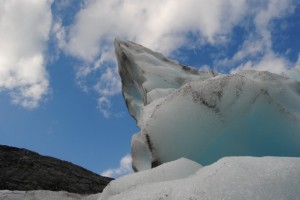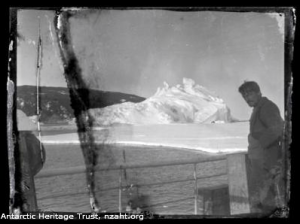 Ice sheets over Antarctica and Greenland are shrinking at an incredible rate of 120 cubic miles per year, and accelerating (the rate of ice loss has more than doubled since 2009). While part of Antarctica is actually increasing in ice cover, overall the continent is on a definite decline. Most of the ice loss, 90 cubic miles per year, is as a result of melting in Greenland. The data comes from the CryoSat-2 satellite measuring the altitude of the ice over the continents. Scientists have been using satellites to measure ice levels for about twenty years now. You can read more about this at this link.
Ice sheets over Antarctica and Greenland are shrinking at an incredible rate of 120 cubic miles per year, and accelerating (the rate of ice loss has more than doubled since 2009). While part of Antarctica is actually increasing in ice cover, overall the continent is on a definite decline. Most of the ice loss, 90 cubic miles per year, is as a result of melting in Greenland. The data comes from the CryoSat-2 satellite measuring the altitude of the ice over the continents. Scientists have been using satellites to measure ice levels for about twenty years now. You can read more about this at this link.
It’s sad to see our society at such an advanced level technologically, yet turning a blind eye to this problem. Man-made climate change is a fact and one that will have to be dealt with sooner or later. It’ll be expensive, but the costs only go up over time.


 Scientist studying the ice in Antarctica have found that a very large area, the West Antarctic Ice Sheet, is melting at an accelerating rate, and has already reached a point of instability, where its melting will continue regardless of any actions we take to reduce the effects of global warming. It is past the point of no return, so to speak. The impact of this is expected to be a global rise in seal levels of several feet (up to 10 feet, potentially) over the next couple of centuries. Yes, that makes it a problem that won’t affect us, but we have a moral obligation to future generations to provide them with the same potential for prosperity that we enjoy.
Scientist studying the ice in Antarctica have found that a very large area, the West Antarctic Ice Sheet, is melting at an accelerating rate, and has already reached a point of instability, where its melting will continue regardless of any actions we take to reduce the effects of global warming. It is past the point of no return, so to speak. The impact of this is expected to be a global rise in seal levels of several feet (up to 10 feet, potentially) over the next couple of centuries. Yes, that makes it a problem that won’t affect us, but we have a moral obligation to future generations to provide them with the same potential for prosperity that we enjoy.
